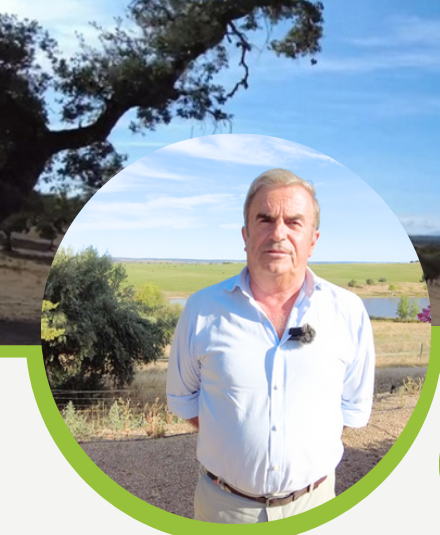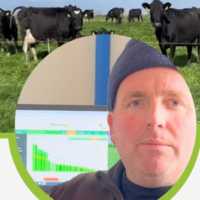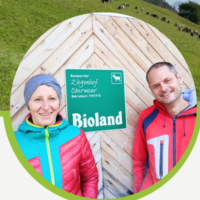Cereal production and forage production as a productive and economic improvement to animal feed
Frederico VAZ MONTEIRO – Improvement of grassland management
PDF Practice abstract (english)
PDF Practice abstract (portuguese)
Description
Practice abstract
The agricultural societies belonging to the heirs of Jerónimo Manzarra exploit an area of 1500 hectares, divided into two farms, one of which has an irrigated area. In the rainfed area, cereals are sown in the best areas and the rest is made up of natural and sown grassland, under a Montado agroforestry system, with both cork and holm oaks. In the irrigated areas, annual mixtures and cereals are sown for forage production (hay and hay-silage), as well as for grazing. The animals are Alentejo, Mertolenga breeds and commercial crossbred cattle.
With the scarcity of water and the corresponding upward trend in the price of a cubic metre, there has been a need to optimise the use of water in crops, opting for crops that are less demanding of water, more rustic and therefore less costly. In rainfed areas, parks are selected to apply phosphate fertilisation, and other parks are selected to seed permanent grasslands.
In this way, it is possible to guarantee the food independence of the farms, feeding the animals with forage in times of greatest food scarcity, and being able to use the grasslands at their best production period. The forage mixtures used are selected for their rusticity and their ability to be cut and grazed.
Context profil
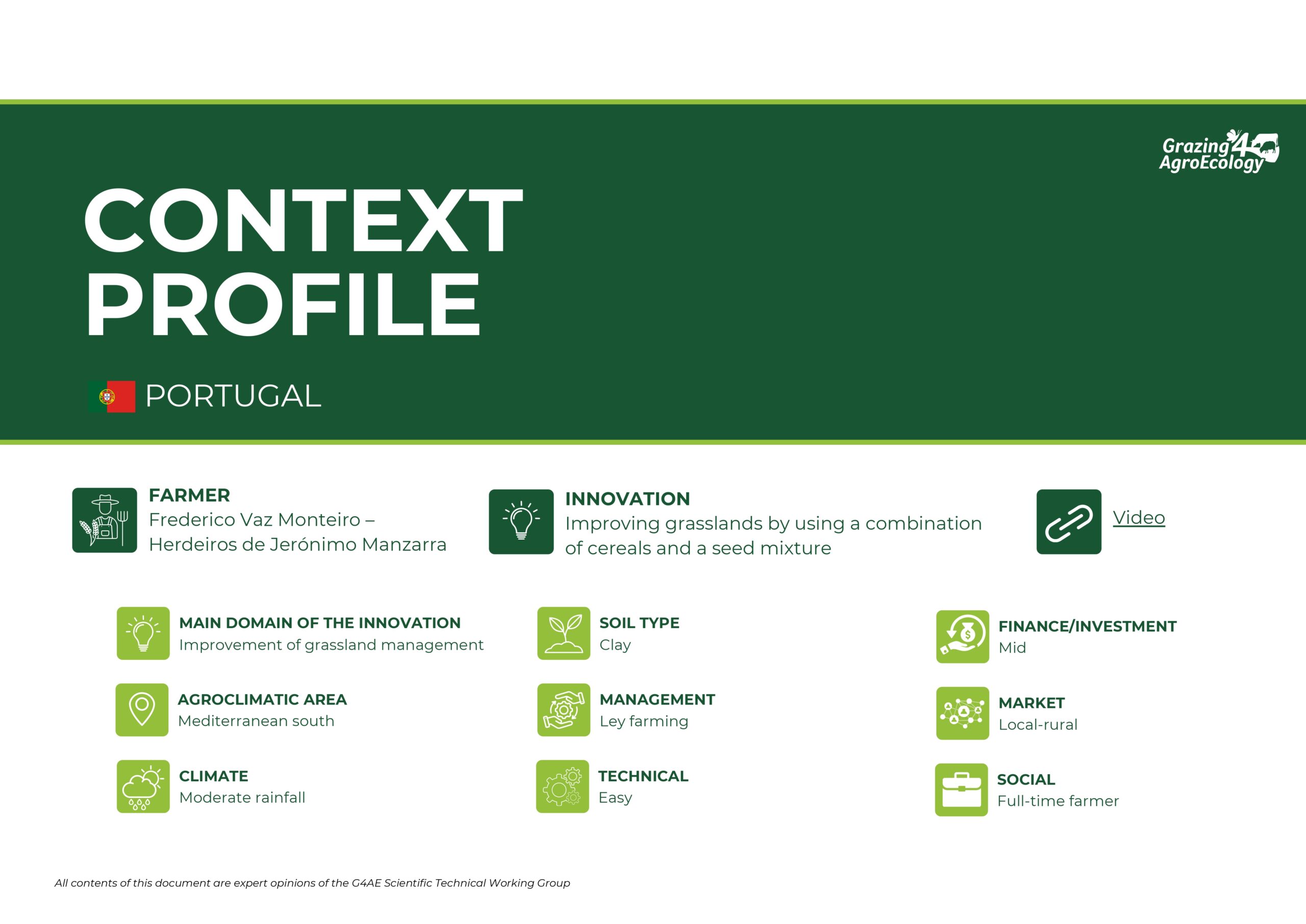
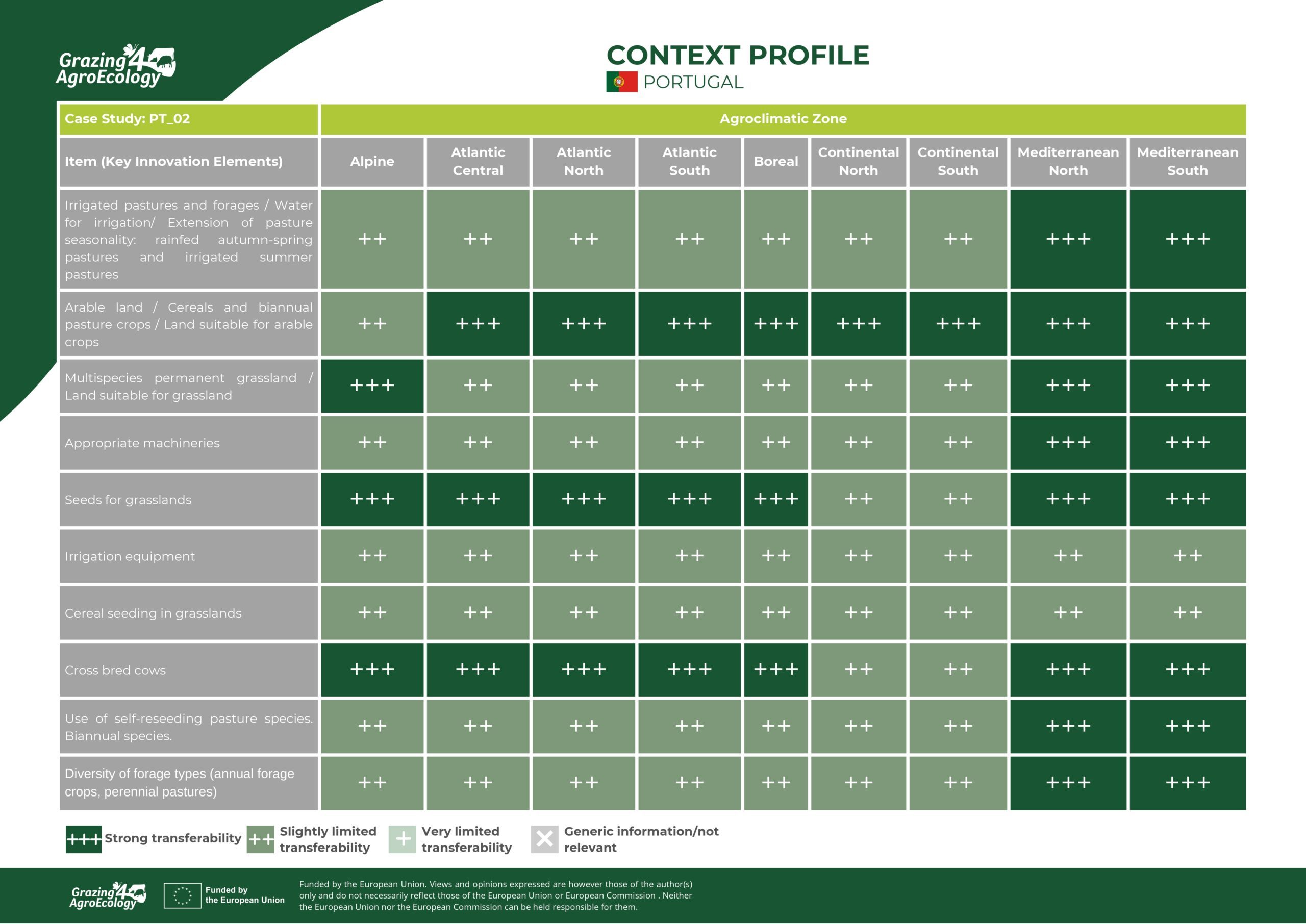
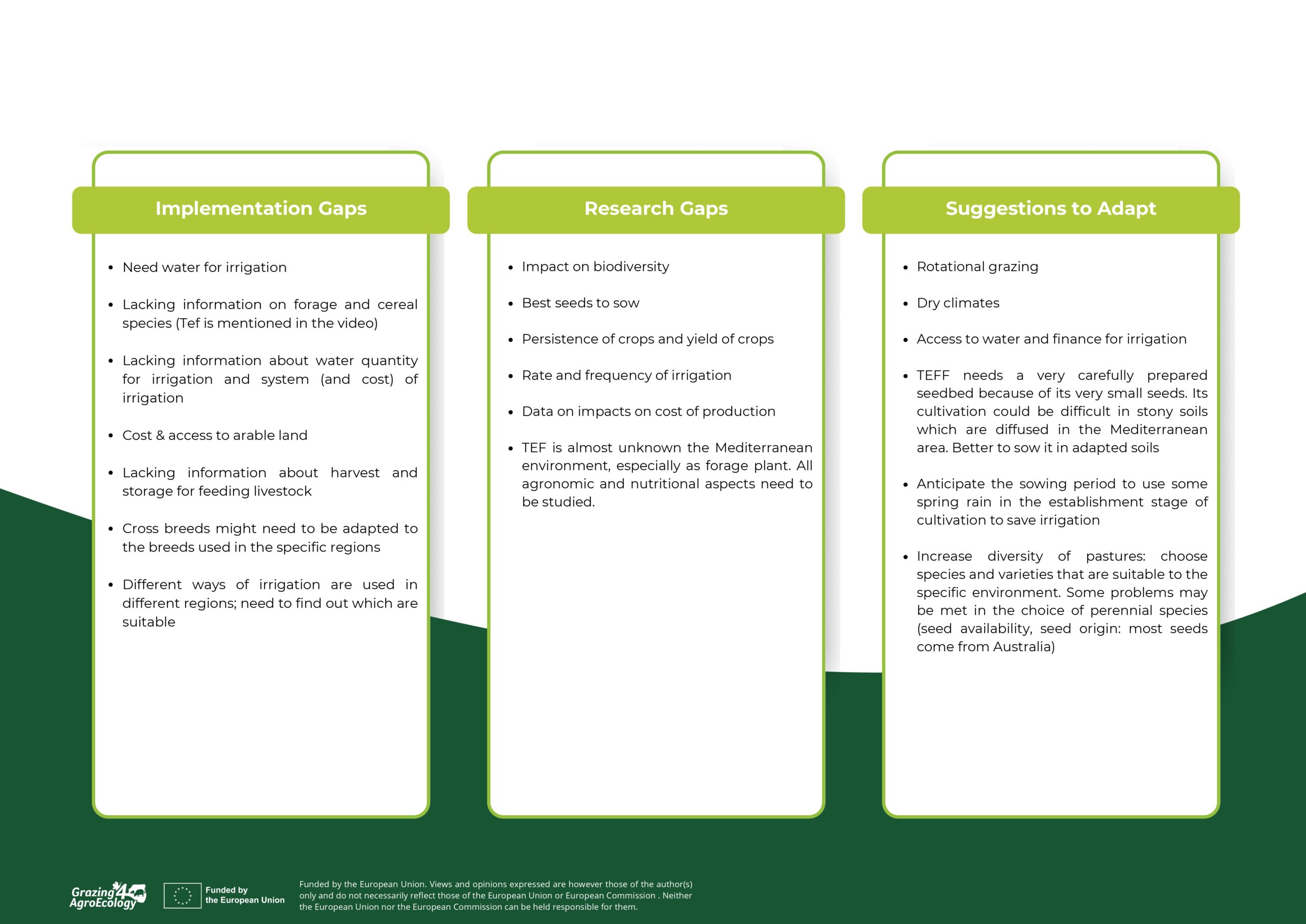
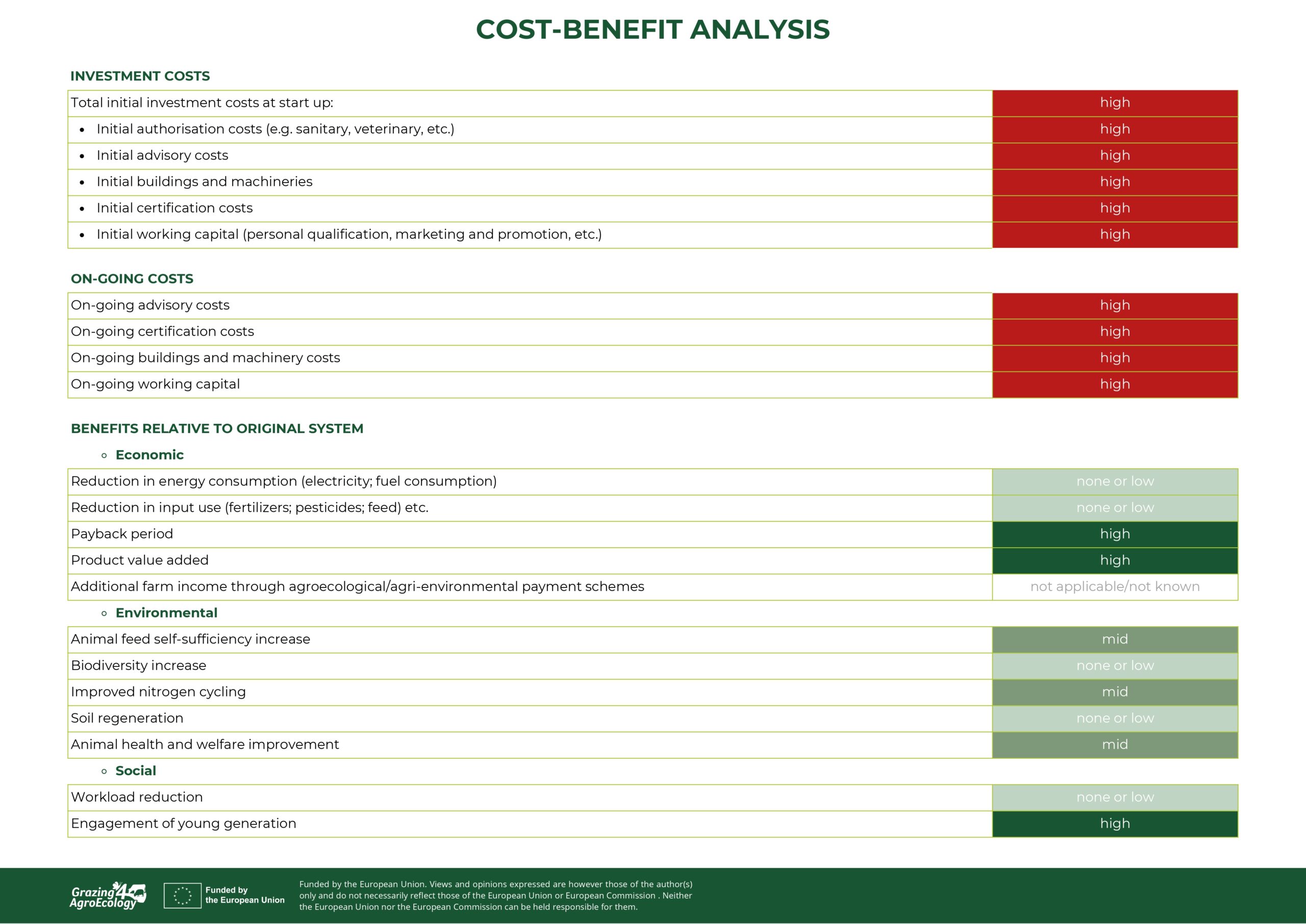

Additional information
| Main domain of innovation | Improvement of grassland management |
|---|---|
| Agroclimatic area | Mediterranean south |
| Climate | Moderate rainfall |
| Soil Type | Clay |
| Management | Ley-farming |
| Technical | Easy |
| Finance/investment | Mid |
| Market | Local-rural |
| Social | Full-time farmer |
